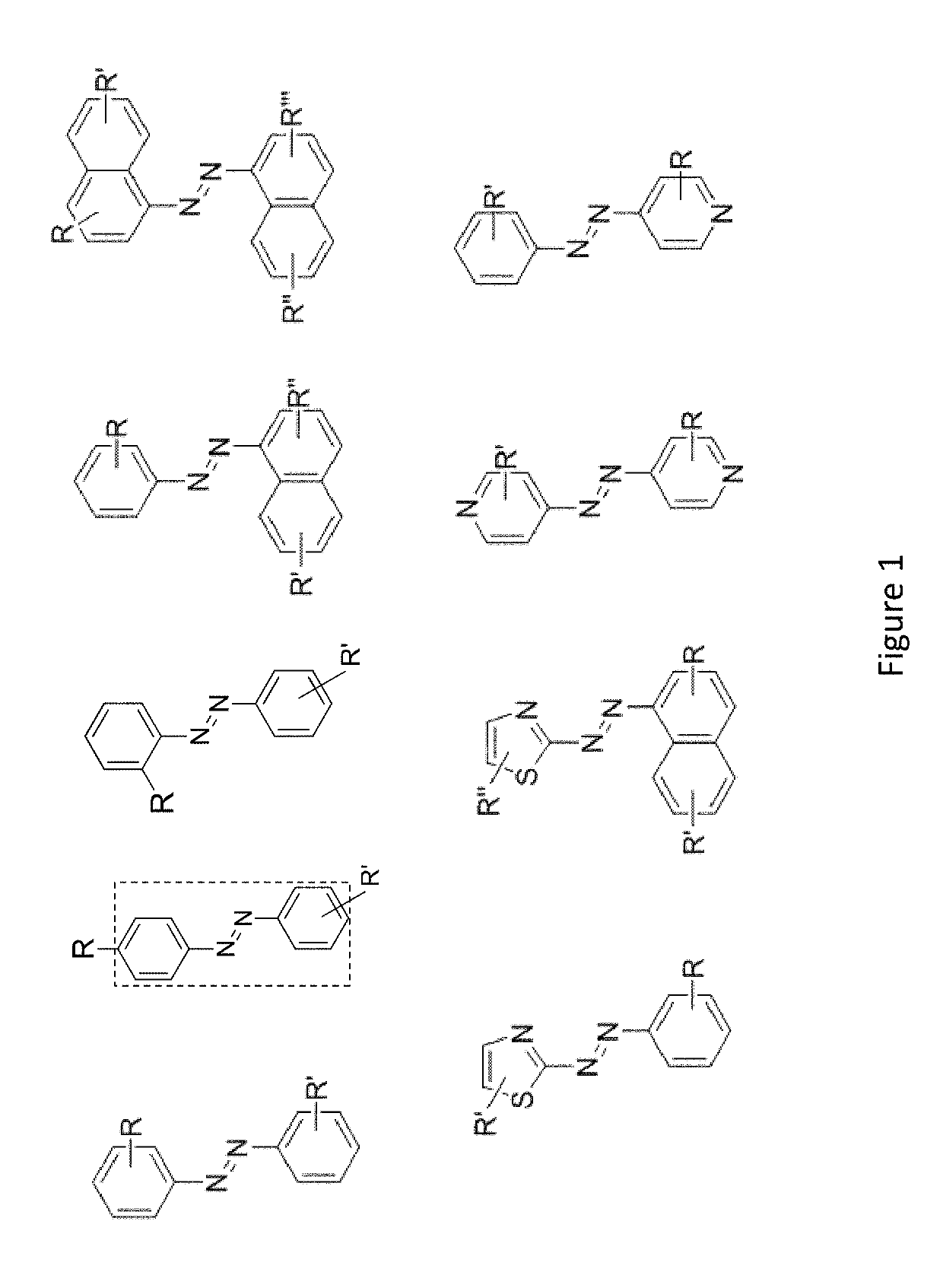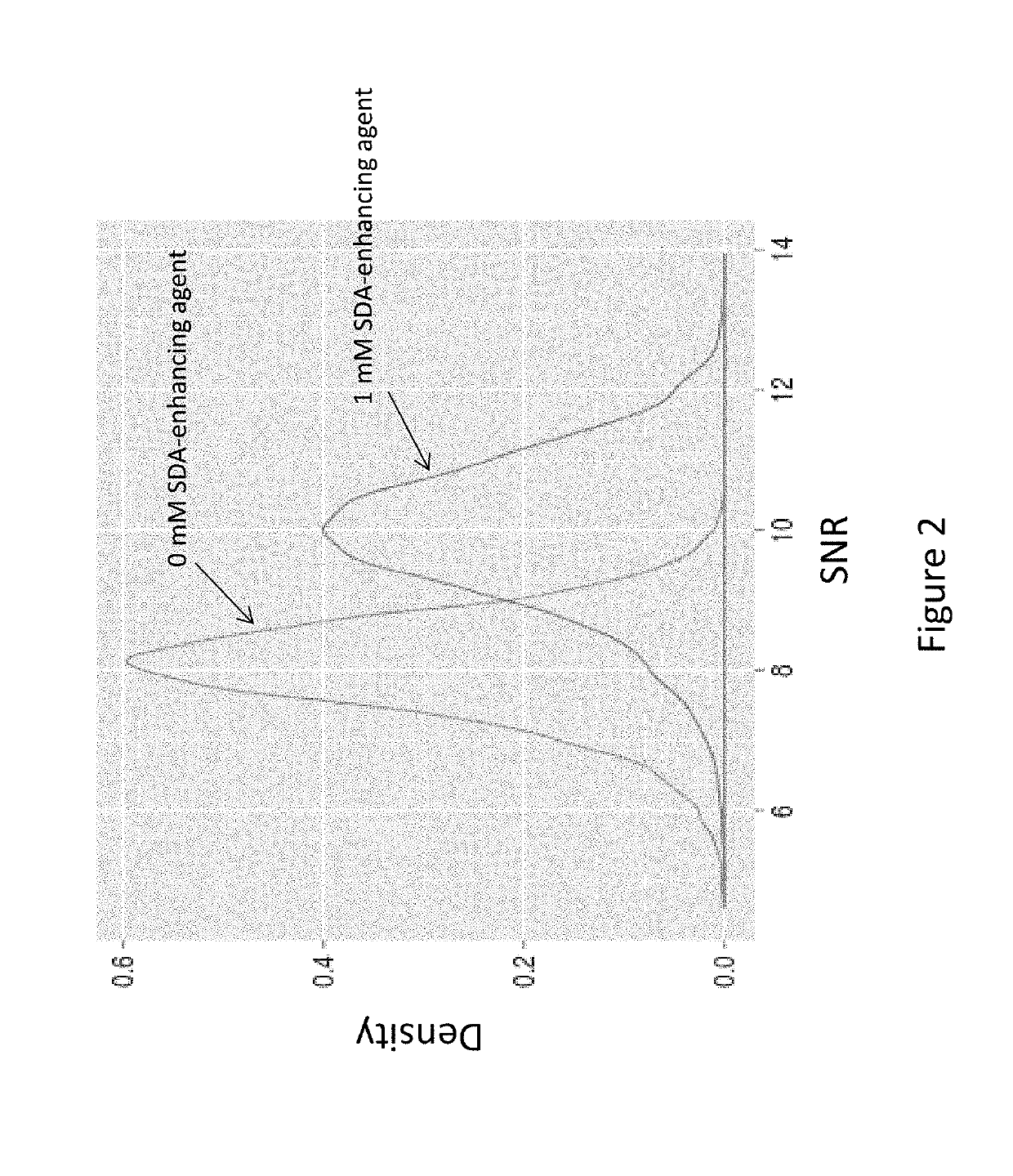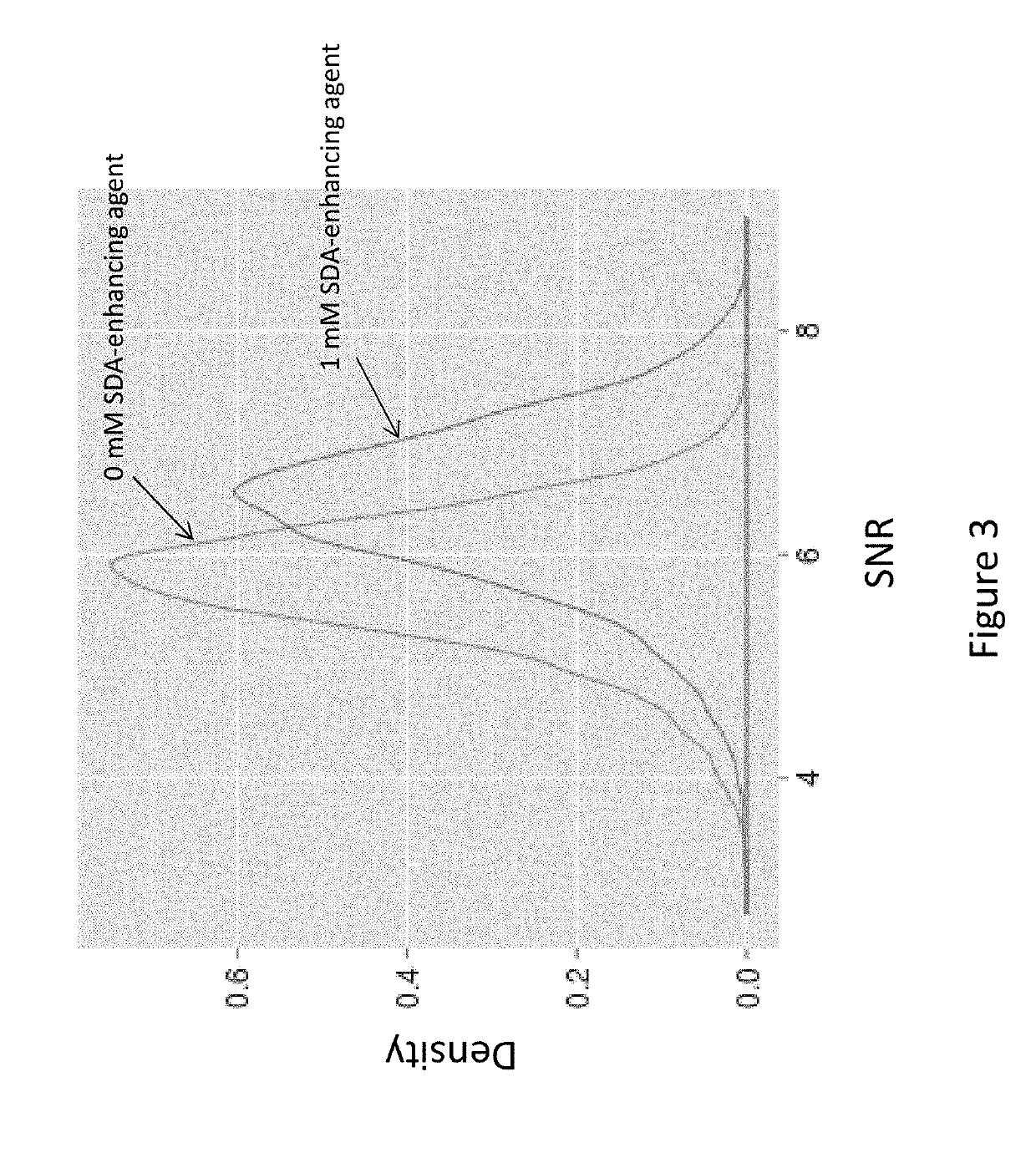Compounds and systems for improving signal detection
a signal detection and compound technology, applied in the field of compound and system for improving signal detection, can solve the problems of destroying free radical production, destroying such reactants, enzymes, etc., and achieve the effects of increasing snr, enhancing one or more optical signals, and reducing or limiting background noise effects
- Summary
- Abstract
- Description
- Claims
- Application Information
AI Technical Summary
Benefits of technology
Problems solved by technology
Method used
Image
Examples
example 1
cing Agent Having Both SNR-increasing Activity and Photoprotective Activity
[0132]FIGS. 2 to 4 show the difference in SNR between a sequencing reaction comprising SDA-enhancing agent no. 1 from Table 1 and an identical sequencing reaction that lacks the SDA-enhancing agent. The formula of the SDA-enhancing agent no. 1 is as follows:
[0133]The fluorophore used for this SNR graph in FIG. 2 was a Cy3.5-dT. An approximately 25% increase in SNR was observed. FIG. 3 shows results for Cy3.5-dG, showing an approximately 14% increase in SNR in the presence of this SDA-enhancing agent. FIG. 4 provides SNR gain data for Cy5-dC in the sequencing reaction, showing a 1-2% increase in SNR.
[0134]FIG. 5 is a graph showing the increase in intensity of signal for a Cy3.5-dT in the presence of SDA-enhancing agent no. 1, the brightness of the signal being increased by about 15%.
[0135]FIG. 6 provides data showing an approximately 10% reduction in noise from Cy5-dC when SDA-enhancing agent no. 1 is present....
example 2
f SDA-enhancing Activity of Additional Compounds
[0140]Additional compounds were tested for SDA-enhancing activity in sequencing reactions performed as described above. Table 2 below shows the relative improvement in accuracy of the results of the sequencing reactions in the presence of the indicated amount of each compound. As indicated above, improvements in SNR and increased photoprotective effects in SMRT® sequencing reactions result in improvements in sequencing accuracy (i.e., the accuracy of a single sequencing pass through a template molecule for which the sequence is known). DQ-123 is provided as a positive control and a reaction without any SDA-enhancing agent is provided as negative control. Accuracies are provided relative to the negative control. These reactions did not contain any additional SNR-increasing or photoprotective compounds.
TABLE 2Relative Sequencing Accuracy in the Presenceof SDA-enhancing AgentsSDA-enhancingRelativeagent No.Accuracy1No Agent0.86 11.00 21.00...
PUM
| Property | Measurement | Unit |
|---|---|---|
| volume | aaaaa | aaaaa |
| observation volume | aaaaa | aaaaa |
| wavelength | aaaaa | aaaaa |
Abstract
Description
Claims
Application Information
 Login to View More
Login to View More - R&D
- Intellectual Property
- Life Sciences
- Materials
- Tech Scout
- Unparalleled Data Quality
- Higher Quality Content
- 60% Fewer Hallucinations
Browse by: Latest US Patents, China's latest patents, Technical Efficacy Thesaurus, Application Domain, Technology Topic, Popular Technical Reports.
© 2025 PatSnap. All rights reserved.Legal|Privacy policy|Modern Slavery Act Transparency Statement|Sitemap|About US| Contact US: help@patsnap.com



